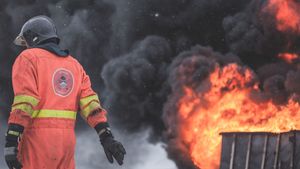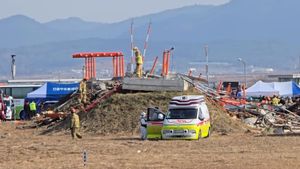YOGYAKARTA Human error is said to be the cause of the accident of the Jakarta-Bandung High Speed Rail (KCJB) project. As a result, two foreign nationals (WNA) from China who worked as technicians died and several others were injured. Apart from this, what does human error mean in work accidents?
The term human error itself often appears in various fields, including in the realm of work safety. This term can refer to performance errors made by workers.
literally, human error in Indonesian means human error. Experts also have a definition to explain ap itu humanerorr.
Meanwhile, Jens Rasmussen, engineering researcher for security systems, human factors, and cognitive systems in Denmark, in Information Processing and Human-Machine Interaction an Approach to Cognitive Engineering defines that human error is a human activity that has an impact on the unsatisfactory running system.
Thus it can be concluded that human error is a human error that is done accidentally or externally, resulting in a work accident.
In the world of occupational safety and in the world of process safety, human error has become the subject of important discussion. In fact, this issue is very important and even regulated in ISO, an international standard in which it regulates health management and work safety (SMK3).
There are four human error perspectives in the context of work safety, namely Traditional Safety Engineering, Human Factors Engineering/Ergonomics, Cognitive System Engineering, and Sociotechnical System. Here's the explanation.
This perspective focuses on individual factors being fully responsible for work accidents. To avoid human error, the way out of this perspective is to intensify the safety campaign, punishment, and so on.
This perspective focuses on human-machine interfaces. It can be said that there is a discrepancy between humans as workers and machines as a system. The error that occurs is a consequence of the incompatibility between workload and human capacity as workers.
This perspective focuses on humans focusing on analysis, planning, and evaluation in the form of cognitive systems. While the concepts used in this approach are skill-based, rule-based, and knowledge-based. This perspective is often used in the industrial world which is related to chemical processes.
This perspective focuses on human performance as an operator that cannot be separated from matters related to culture, social factors, and management policies imposed on the organization.
The existence of a human error can trigger fatal events that are not only felt by certain individuals but in the wider community. Here are some types of human error.
It is a simple mistake that even though it has been anticipated, it can happen because of another small error. Examples of human error slips such as misinput numbers, mispressing buttons, and so on.
It is a long-term memory that suddenly disappears even though it is very important to include. For example, a doctor left his syringe at home, even though he was asked to come to vaccinate.
It is a mistake that occurs because it is still based on the rules and procedures that are remembered without paying attention to certain changes. For example, it is wrong to determine the price of fuel that you have to buy at this time, but the price used is the price of fuel last month.
It is a person's fault because he does not have knowledge of an unusual situation or has never experienced it. For example, a person will go to Jakarta for the first time. However, the estimated duration of the trip that he determined was based on only one factor, even though there were other factors.
That's information related to what human error means. To get other interesting information, visit VOI.ID.
The English, Chinese, Japanese, Arabic, and French versions are automatically generated by the AI. So there may still be inaccuracies in translating, please always see Indonesian as our main language. (system supported by DigitalSiber.id)













